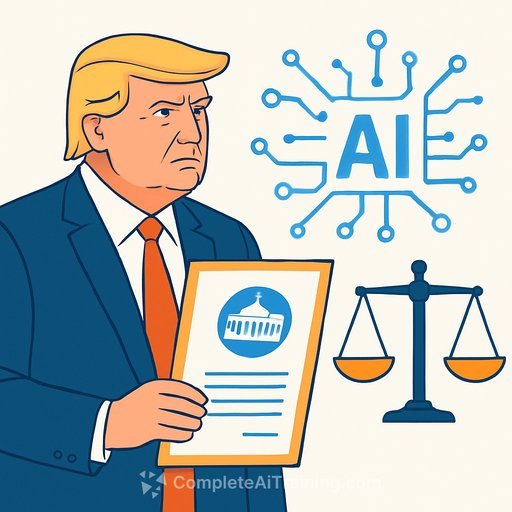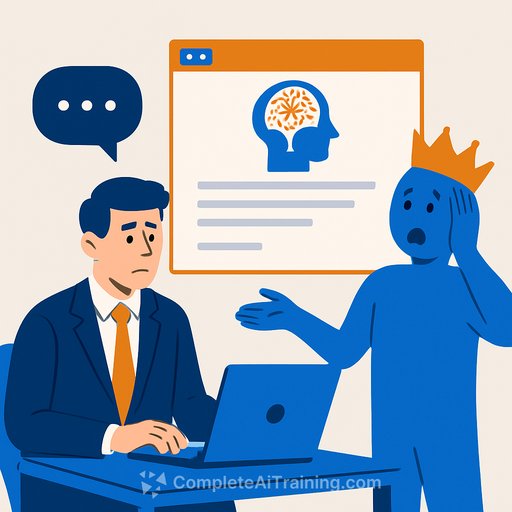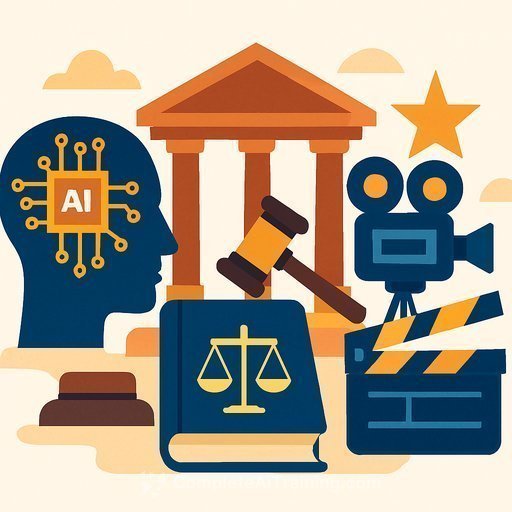AI Just Stress-Tested the Right to Exclude
For more than a century, companies used intellectual property as a shield-a way to keep others from using their names, designs, and logos. That shield was built for a slower world. Now, AI can spin up a convincing logo, slogan, or photo-realistic "product" in minutes and push it to global marketplaces overnight.
The rules haven't kept pace. The legal tests are still grounded in traditional doctrine, even as the tools shift. Business leaders, in-house counsel, and boards are making high-stakes calls with maps drawn for a different era.
Who Owns an AI-Built Brand?
If a generative AI tool designs your logo or writes your tagline, you have an ownership question before you have a brand. The US Copyright Office has been clear: works created entirely by machines-without meaningful human input-aren't copyrightable. Trademarks are less clear, but the same risk applies: a mark sourced straight from an algorithm, with no documented human authorship or diligence, may be unprotectable or derivative.
That's not academic. You could launch with a slick identity and discover you can't stop a competitor from using something nearly identical. Worse, if someone already owns a similar image or name, you may be blocked from your own brand.
AI doesn't sign contracts. If a model generates your company name or logo, chain of title can be murky. A trademark application requires a real owner and clear provenance. Unclear origins can sink a filing before you order business cards.
Make Authorship and Ownership Boringly Clear
- Require meaningful human contribution: selection, arrangement, editing, and final approval that rises above trivial input. Document it.
- Keep a creation record: prompts, iterations, human edits, rationale for choices, and who approved what.
- Lock down chain of title: employee and contractor IP assignments; vendor agreements with clear ownership, reps, warranties, and indemnities.
- Check model and tool terms: usage rights, training-data disclosures, and restrictions that could impair exclusivity.
- Run real clearance: knockout and full searches for word marks and designs; consider a design search code strategy.
Counsel on the Hook
The USPTO has reminded practitioners that AI can assist, but filings require human oversight, competence, and candor. The Office has already expunged large numbers of applications. If a client hands you an AI-generated mark and you file without questions, you're creating risk for them-and for yourself. Call it "unintellectual property."
Guidance is explicit: it's the attorney signing, not the algorithm. A bot can generate images, but it can't vet conflicts, assess distinctiveness, or verify citations.
Filing Checklist for AI-Touched Marks
- Ask if AI was used, how, and by whom. Keep that record in the file.
- Confirm human authorship and ownership; secure assignments before filing.
- Run comprehensive clearance (word and design). Don't rely on the client's tool output.
- Validate specimens and use-in-commerce. Avoid mockups that can't support registration.
- Disclose AI use where rules or ethics require; maintain candor in all submissions.
- Manually verify any AI-drafted legal analysis or citations before inclusion.
Enforcement in a Copy-Paste Market
Trademark law still centers on likelihood of confusion. Training data may cause AI systems to echo what already exists. If your output looks close to a competitor's, the fact that a machine produced it is irrelevant under the current tests.
Expect more lookalikes, faster. That increases the premium on fast clearance, early filing, and active policing.
Practical Enforcement Moves
- Set up watch services for word marks, designs, domains, and app stores.
- Use platform takedowns and brand registries; standardize evidence packets and declarations.
- Record key marks with customs where available and keep product indicators current.
- Stand up a quick-response protocol: first contact, cease-and-desist, settlement templates, escalation thresholds.
- Capture proof of first use and distinctiveness; keep dated marketing and sales materials.
Board-Level Policy: Set Guardrails Now
This is not a "legal-only" issue. It's a leadership decision about speed, risk, and spend. Treat brand creation with AI as a governed business process.
- Form a cross-functional team: legal, marketing, product, and finance at the table from day one.
- Adopt an AI brand policy: approved tools, required human input, records, clearance standards, and filing triggers.
- Get regular reporting: filings, oppositions, takedowns, counterfeit trends, and ROI on protection.
- Loop in tax early: assess Sections 174 and 197 treatment for AI build vs. buy, and for acquired intangibles.
- Encourage executives to build personal brands; a trusted human presence differentiates you when logos and voices can be mimicked.
If your team needs structured upskilling on AI use and governance, review curated learning paths by job role at Complete AI Training.
What Regulators Are Signaling
The US Copyright Office's guidance confirms that machine-generated content without meaningful human authorship isn't copyrightable. See the Office's policy page for details: Copyright Registration Guidance: Works Containing AI Material.
The USPTO has issued guidance on using AI tools in practice, emphasizing oversight, competence, and candor in filings. Review the Office's update: Guidance on Use of AI-Based Tools Before the USPTO.
Bottom Line
IP still fuels growth. For small businesses especially, trademarks anchor trust. Without clean ownership and protection, your AI-assisted brand can become unusable, unenforceable, or a lawsuit waiting to happen.
AI tends to generate names and visuals that are generic, catchy, or derivative-because that's what people like. Your edge is a clear story, documented ownership, and disciplined process. Until the law catches up, expect busy dockets and a few headaches. Keep the real thing shining through-and make sure it's actually yours.
Your membership also unlocks:






